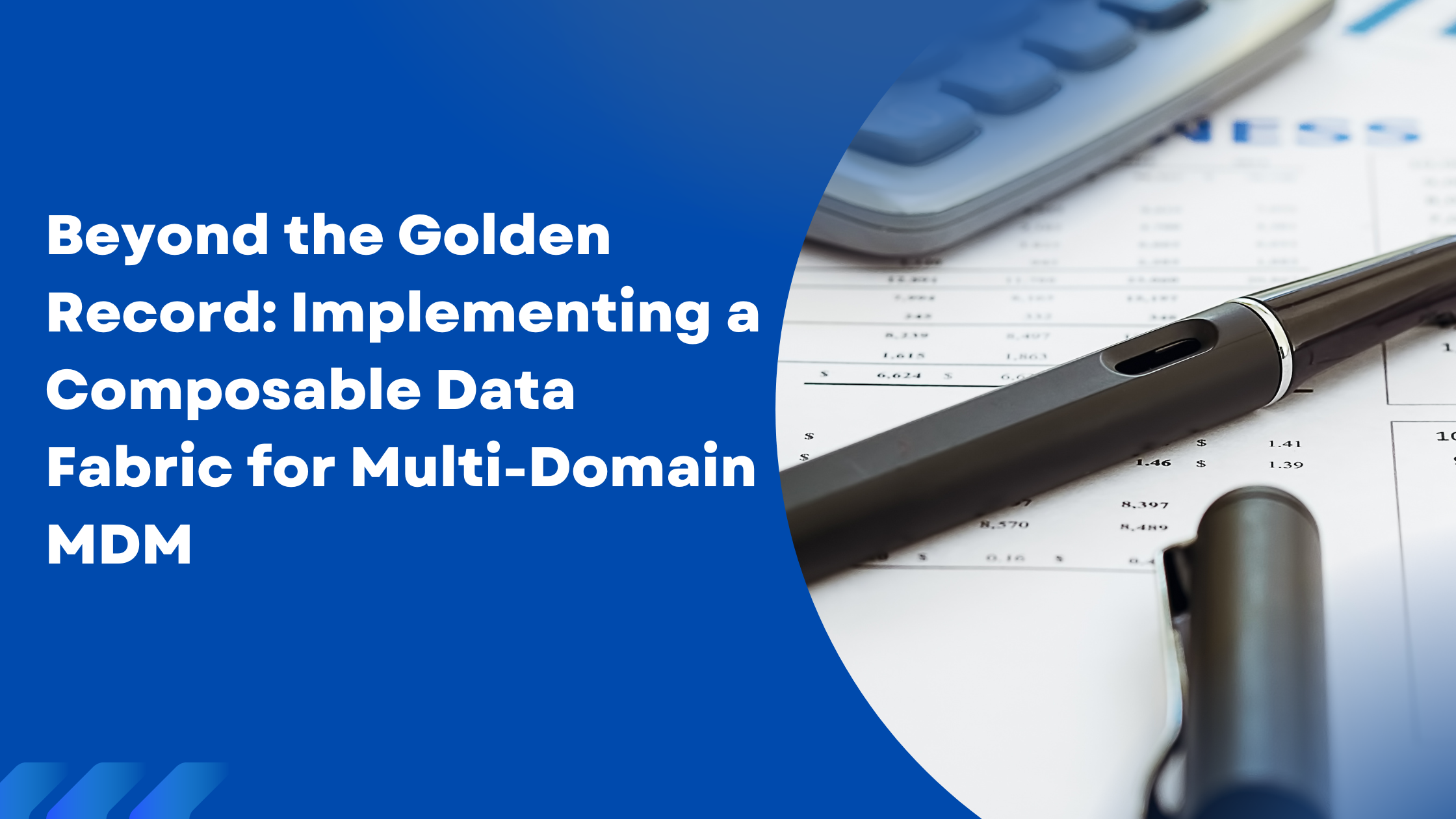Beyond the Golden Record: Implementing a Composable Data Fabric for Multi-Domain MDM
Introduction: The Challenge of the Monolithic MDM
Master Data Management (MDM) has long aimed for the "Golden Record"—a single, reliable source of truth. However, many organizations find their legacy, monolithic MDM systems struggling under the weight of exponential data growth, real-time integration demands, and the complexity of managing multiple domains (Customer, Product, Location, Supplier) simultaneously.
The future of MDM lies in adopting a Composable Data Fabric architecture. This approach moves beyond centralized control to a decentralized, federated model that delivers governed, trusted data across the enterprise in real time, making it the essential backbone for strategic functions like SPM.
Why Monolithic MDM Architectures Fail in the Age of Agility
Traditional MDM often creates friction due to its centralized, "heavy-lift" approach:
Integration Bottlenecks: Every new system (like an SPM platform) requires extensive, custom integration, slowing down time-to-value.
Scalability Issues: Managing multi-domain complexity becomes rigid, leading to governance gaps when trying to establish cross-entity relationships (e.g., connecting a customer record to a specific product hierarchy).
Delayed Delivery: Batch processing delays mean systems like SPM often operate on stale data, fueling disputes and inaccurate forecasting.
The Composable Data Fabric Solution
A Composable Data Fabric, leveraging modern MDM platforms, is an architectural pattern that enables organizations to integrate data from diverse sources without a massive, centralized migration project.
Key components of this modern approach:
AI-Native Data Mastering: AI and machine learning are embedded into the mastering process, automating data matching, cleansing, and enrichment. This shifts the focus of data stewardship from manual cleanup to strategic governance.
Event-Driven Architecture: Data changes are propagated in real-time. If a customer address is updated in the core ERP, the SPM system receives the change immediately, ensuring territory and commission calculations are always based on the latest, governed data.
Federated Governance: Governance policies are applied across the entire fabric, even as data ownership is decentralized to business domains. This provides flexibility without sacrificing the enterprise standards necessary for compliance and trust.
Practical Steps to Migrating to a Composable MDM
Migrating to this model requires a strategic consulting partner focused on architecture and business process alignment. Our approach involves:
Prioritizing Domains: Start with the domains critical to revenue (Customer and Product) to immediately impact SPM, sales, and marketing.
Establishing the Governance Layer: Implementing the automated policies and lineage tracking that enforce quality across the fabric.
Phased Integration: Incrementally connecting systems using data services and APIs, ensuring continuous data validation and real-time synchronization.
The Foundation for Digital Growth
The Golden Record is not enough; you need the Data Fabric to deliver it everywhere, all the time. By adopting a composable MDM strategy, organizations secure the foundational data quality needed to fuel high-stakes applications like SPM, driving operational efficiency, regulatory compliance, and most importantly, trusted revenue growth.
Is your current MDM setup causing integration bottlenecks? Request a Data Architecture Readiness Workshop with an Ackle MDM Architect to evaluate your path to a Composable Data Fabric

